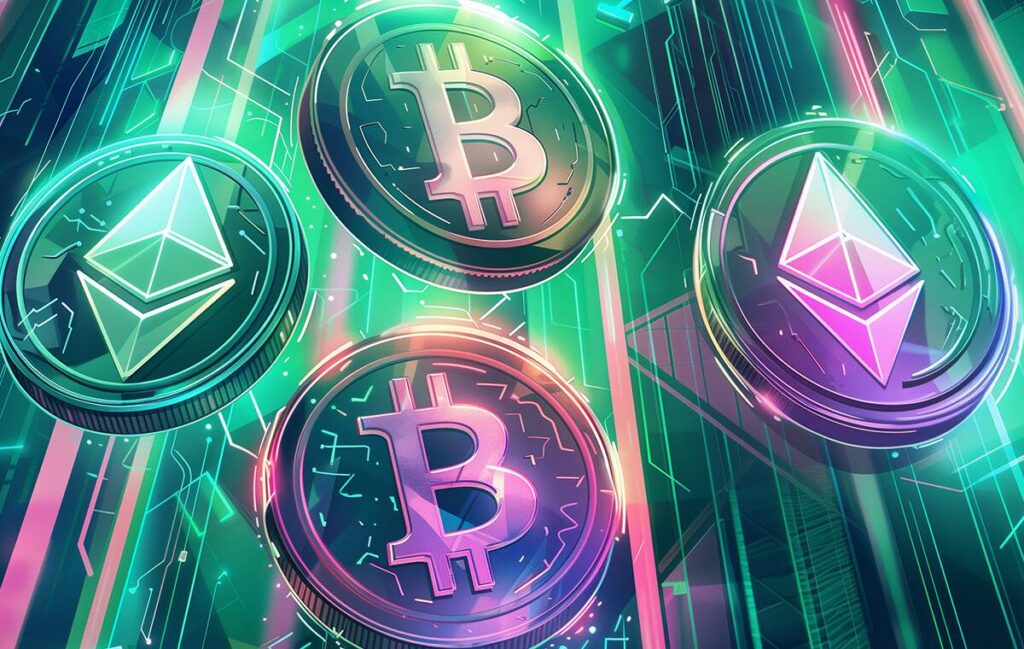
Play-to-Airdrop Games: Is it the New Meta in GameFi?
For years, gamers have poured their passion into playing games, testing early builds, and providing valuable feedback to developers. Yet, the rewards often seemed to flow one way—to the bigwigs and a select few. But in Web3, things are changing.
A new meta is taking the gaming world by storm: play-to-airdrop. With the increasing popularity of blockchain integration in gaming, play-to-airdrop campaigns are shaping up to be the next big thing in marketing a web3 game. Game studios are getting creative with ways to reward their players, attract new ones, and distribute blockchain-based native in-game tokens.
Play-to-airdrop is a fresh twist on the play-to-earn model, where completing quests, leveling up, and engaging in-game activities not only enhances your gaming experience but also makes you eligible for crypto airdrops. Imagine playing your favorite game and earning crypto rewards just for having fun and being part of the community!
Communities and gamers now have a real incentive to engage, communicate, and contribute feedback. Allow us to elaborate!
What is Play-to-airdrop?
So what exactly is play-to-airdrop?
In essence, play-to-airdrop functions as both a token distribution strategy and a means of rewarding dedicated players. Unlike traditional reward systems within games, where in-game actions contribute to the economy, play-to-airdrop seeks out the most committed players and rewards them directly based on their activity.
Picture this: as you farm resources, craft items, defeat formidable foes, and level up your character in a Web3 game, you become eligible for airdrops of cryptocurrency tokens. These tokens serve as not just in-game currency, but as a tangible representation of your dedication and skill within the game’s ecosystem.
What sets play-to-airdrop apart is its role in jumpstarting a game’s economy. By distributing tokens directly to active players, developers lay the foundation for a play-to-earn economy where players can exchange their earned tokens for digital assets.
This innovative approach marks a significant evolution in Web3 gaming. Beyond flashy graphics and immersive gameplay, we’re witnessing the emergence of play-to-airdrop, or “P2A,” where players accumulate points that hold real-world value.
The rising popularity of P2A underscores a fundamental truth about Web3 gaming: speculation drives the market. However, with play-to-airdrop, developers have an opportunity to create balanced game economies that endure over time.
How does Play-to-Airdrop Work?
Whether it’s tokens, points, or other virtual assets, the desire to earn and accumulate is what keeps gamers engaged. Unlike its predecessor, Play to Earn (P2E), where players receive tokens directly for their in-game activities, P2A rewards players with points based on the value of their time spent playing. These points serve as placeholders for potential future rewards to be issued by the game developer/studio.
The allure of P2A lies in its element of uncertainty. Players are essentially gambling on the future value of their accumulated points. This creates an environment ripe for speculation, where players must weigh the risk against the potential reward.
While this may seem daunting compared to the certainty of P2E, where players know exactly what they’ll earn and when, P2A offers significant advantages for both game developers and economies. By introducing a level of unpredictability, developers gain greater flexibility in balancing the in-game economy while fostering virality among players.
As one user, VaderResearch, aptly put it, “[P2A] rewards are uber probabilistic — enabling flexibility for developers to balance the economy while achieving virality.” This sentiment underscores the potential of P2A to revolutionize the gaming landscape and drive innovation within the burgeoning world of Web3 games.
Play-to-Airdrop Campaigns of some Notable Projects

Below, we’ve compiled a list of notable projects and games that have embraced this innovative distribution model.
QORPO WORLD: Airdrop Campaign Ongoing
Recently, Citizen Conflict by QORPO World also gained traction as another community-driven shooter game that entered the realm of play-to-airdrop earning model. However, QORPO stirs P2A waters with a twist.
In the ongoing airdrop campaign, participants are rewarded $QORPO airdrop share through a variety of engaging tasks, ranging from social missions, ecosystem tasks, gaming quests and NFT soft-staking. All of these activities raise players’ rank in the airdrop leaderboard, increasing their final share of $QORPO reward.
Saga: Multi-Game Play-to-Airdrop Campaign
Saga blockchain launched a play-to-airdrop campaign for their SAGA token, aiming to attract both developers and gamers. Unlike traditional campaigns tied to one game, Saga’s initiative spanned multiple games including Generative Dungeon, Rogue Nation, Tally Up, and Another World. Top performers in each game were eligible for the SAGA token airdrop upon the mainnet’s launch in the spring.
Pixels: Farm BERRY, Earn PIXEL Tokens
Pixels players were already familiar with earning BERRY tokens through farming and quests. However, the team behind Pixels launched a play-to-airdrop campaign for their governance token, PIXEL. This campaign unlocked new gameplay mechanics and rewards, enhancing the gaming experience. The official announcement for the PIXEL airdrop arrived three days before its January launch.
Kuroro Beasts: Earn KURO Tokens through Gameplay
TreasureDAO’s Kuroro Beasts introduced the KURO token early in 2024. As part of their distribution strategy, they allocated 7% of KURO tokens to active players. Gamers could accumulate points by completing in-game tasks, participating in specific events, and engaging on social media. The more points earned, the larger the share of the KURO token pie.
Nifty Island: Claim Your Island, Earn ISLAND Tokens
Nifty Island, a metaverse world, allowed players to claim islands and create diverse experiences within them. In January, they initiated a massive play-to-airdrop campaign for their ISLAND token. Players earned ISLAND tokens by engaging with the game, with additional rewards for holders of certain NFTs, such as Nifty Island Palms.
MixMob: Play and Earn MXM Tokens
MixMob’s play-to-airdrop campaign accompanied their token presale. Players who participated in the closed beta, which began on December 9th, had the opportunity to earn MXM tokens from a dedicated pool. Additionally, the in-game soft currency, SUDS, could be staked, earned, and exchanged for MXM tokens.
These projects represent just a glimpse into the growing trend of play-to-airdrop campaigns in Web3 gaming.
Benefits for Game Developers

Since the emergence of Play-to-Earn (P2E), the gaming community has witnessed a notable division along Web2 and Web3 lines. Initially, Web2 gamers showed little interest in blockchain elements integrated by major gaming studios, viewing them with skepticism. Yet, Web3 gamers remained undeterred, drawn primarily by the economic prospects these games offered.
Today, the boundaries between Web2 and Web3 games are becoming increasingly blurred. Web3 gaming studios have diligently worked to enhance game quality, attracting funding to create blockchain-based games that rival the experiences offered by Web2 counterparts. However, while these advancements may broaden the user base, Web3 gamers’ core motivations remain unchanged. Their engagement hinges not on aesthetics, but on the allure of speculation and asset acquisition. Consequently, Play-to-Asset (P2A) gaming has swiftly gained popularity among the “degen” gamer communities.
Adrian Krion, CEO and founder of Berlin-based blockchain gaming startup Spielworks, aptly captured the sentiment, stating, “The thrill of turning a profit can add an exciting new element to gaming.” Yet, beyond mere financial gain, earning a Non-Fungible Token (NFT) holds significance in community status. Thus, while Web3 gamers still seek enjoyment and challenge in their gaming experience, the acquisition of NFTs embodies a dual purpose – a symbol of status within the community and a tradable asset in the marketplace.
In Conclusion
Play-to-airdrop is more than just another token distribution method. It’s a groundbreaking approach to launching in-game currencies, driving adoption and engaging users.
P2A’s overriding purpose is to attract the group that’s been the most dedicated to Web3 gaming since the beginning: the very same Web3 crowd who kicked off Web3 gaming’s journey into the mainstream in 2021.
Whether P2A will be more successful than P2E in the long term remains to be seen. It is still so new that its long-term effects on the space are not yet known. But one thing seems inevitable — it offers more of what Web3 gamers are most motivated by: blockchain-based rewards.
End Note:
For more such informative articles, don’t forget to check out our other pieces on the QORPO Gamefi Hub. Visit our website for more details on our ecosystem, airdrop farming campaigns & more.

